How Louisiana Is Coping With Flooding In Cemeteries
10:39 minutes
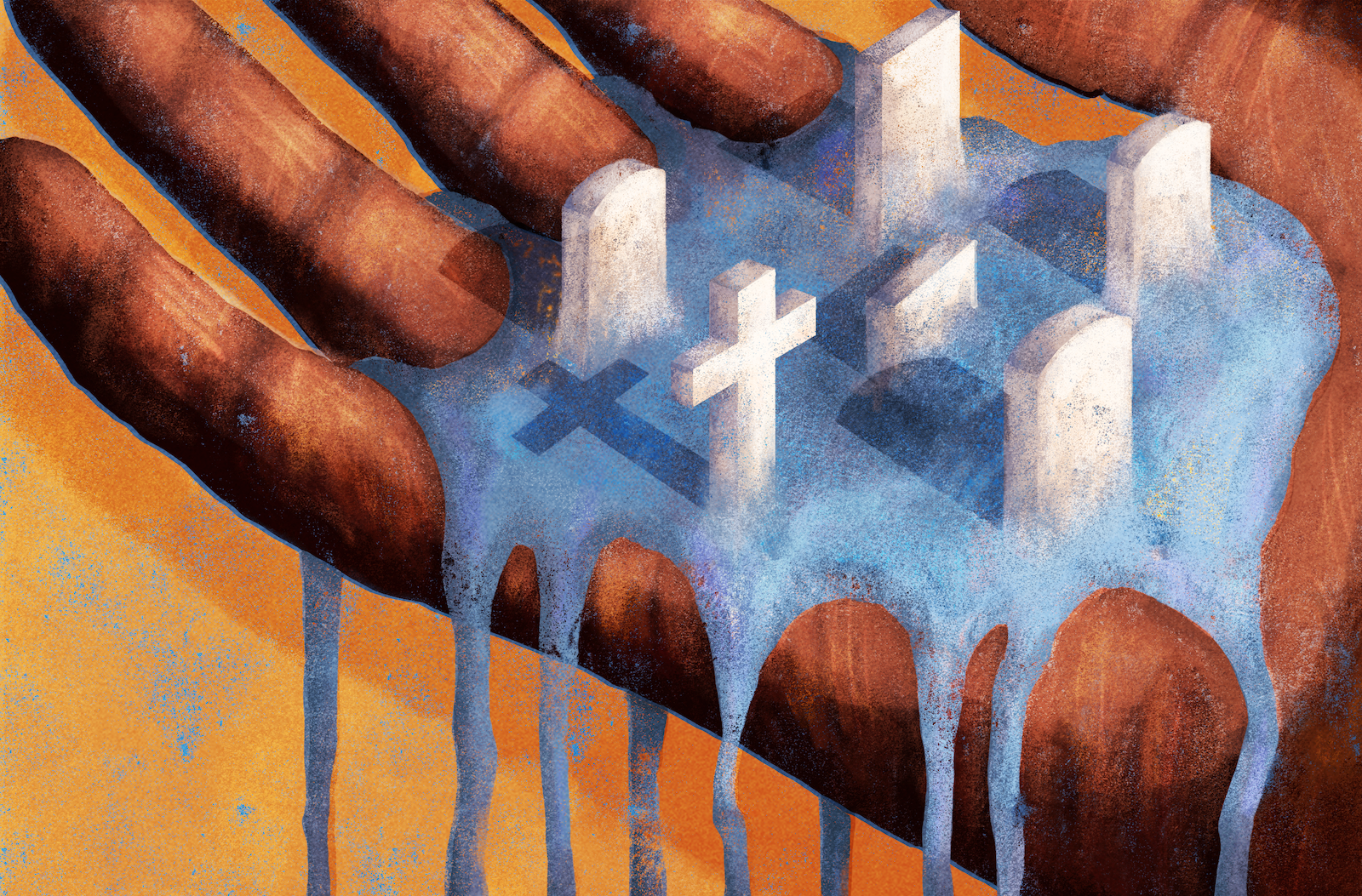
This article is part of The State of Science, a series featuring science stories from public radio stations across the United States. This story, by Eva Tesfaye, was published in collaboration with WWNO.
Emily Dalfrey lives across the street from Niblett’s Bluff Cemetery, where generations of her family are buried, in Vinton, Louisiana.
In 2016, a period of prolonged rainfall caused flooding so severe that people could drive boats over the cemetery. The water put so much pressure on the graves that some of the vaults, which are located near the surface, popped open. Some of Dalfrey’s own family members’ caskets were carried away and deposited in her yard.
Unsure how to restore the cemetery, the community contracted Gulf Coast Forensic Solutions, a company that helps people locate and rebury loved ones after natural disasters damage cemeteries.
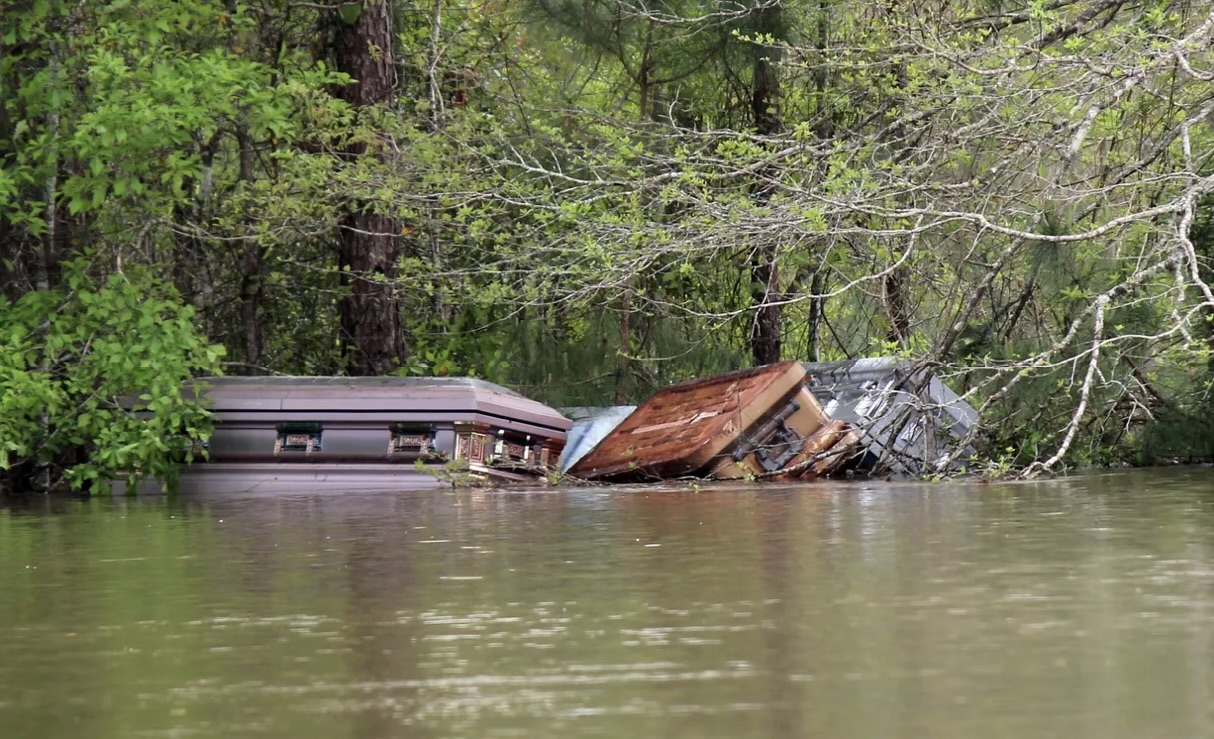
“We truly would have not gotten it done if we would not have had that guidance and that help,” Dalfrey says of Gulf Coast’s assistance. “Because when you bury your family, you think they’re there forever.”
Louisiana has dealt with flooded cemeteries and caskets washing away for decades, but the problem is getting worse—and more widespread. As climate change increases the likelihood of weather-related disasters, many other states are now grappling with damaged cemeteries. And they’re looking to Louisiana for help.
Charlie Hunter, the CEO of Gulf Coast Forensic Solutions, started in this line of work during his time at the Calcasieu Parish Coroner’s Office, where he worked in death investigation. Normally, such a job involves investigating homicides and car accidents, but Hunter found himself spending a lot of time doing grave site recovery after Hurricane Katrina in 2005.
He started his company in 2020, repairing over 75 cemeteries across Cameron and Calcasieu Parishes in southwest Louisiana after Hurricanes Laura and Delta. He eventually left his job at the coroner’s office and expanded the company in 2023.
“It’s being able to give families a little bit of peace at the end of the day,” he says, “and so I think that’s what’s really important. It’s a never-ending job.”
Working in a state that’s been so frequently pummeled by hurricanes has made him something of an expert in his field.
“Now that cemetery damage and restoration is such a big deal, people reach out to us from all across the country, whether it’s from hurricanes, flooding events, mudslides,” he says.
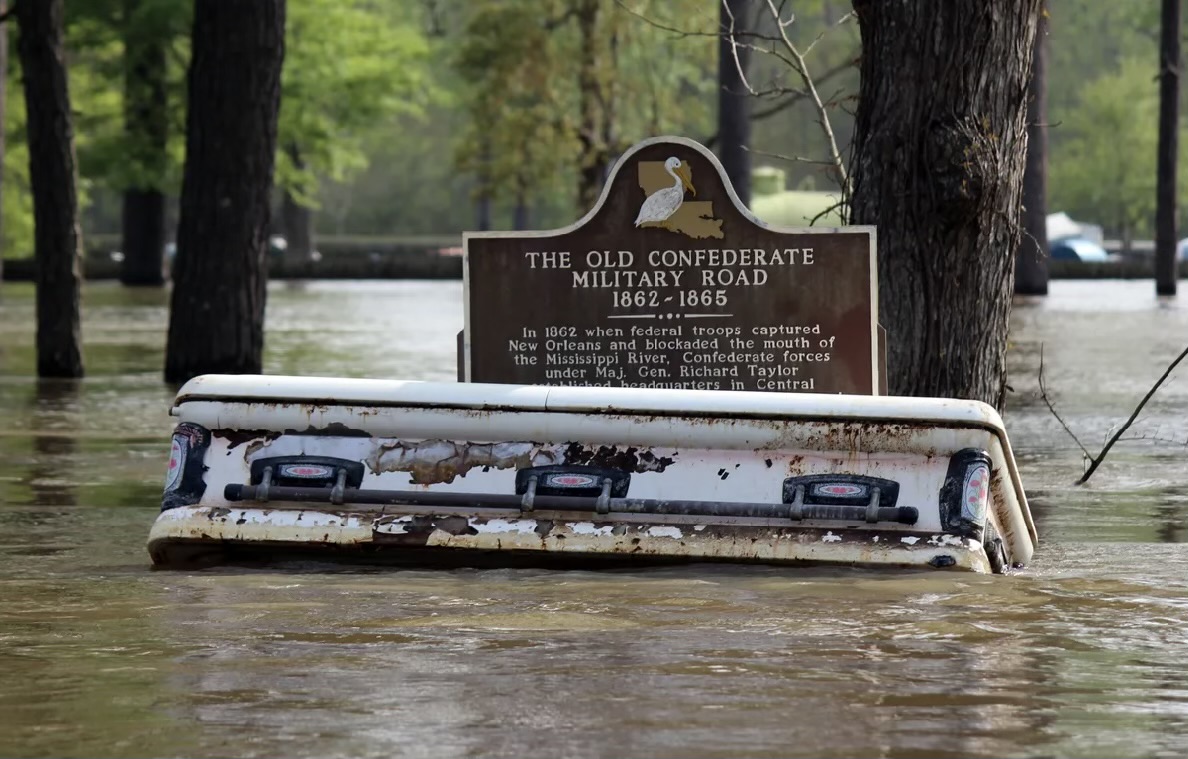
Hunter says he’s helped people in Florida, South Carolina, Tennessee, and even California. One of them was Eva Kenner from Port Charlotte, Florida. She manages Charlotte Harbor Cemetery, the oldest marked cemetery in its county. It was hit by Hurricane Ian in 2022, resulting in 26 fallen trees and close to 100 damaged gravestones.
“I’ve been there 20 years working at the cemetery and we’d never had damaged headstones from a storm before,” Kenner says.
She hired Gulf Coast Forensic Solutions to help repair the cemetery and says the company fixed around 80 headstones in one week—but there’s no getting back those beautiful trees.
“The 26 trees just took away the whole atmosphere. There were great, giant old oaks, hundreds of years old, sun dappled,” she says.
But the repaired headstones have held up, she says, even after other storms have torn through, leaving debris on the ground.
The flooding that damaged Dalfrey’s family members’ graves in 2016 affected more than 800 graves in 74 cemeteries across Louisiana. After that event, the Louisiana Cemetery Response Task Force was created.
“We are the only state that has that,” says Ryan Seidemann, the task force chairman.
The task force is activated when there has been a disaster declaration and reports of cemetery damage. It is currently activated and has been since Hurricane Ida in 2021.
Seidemann says the task force was created to fill a void in federal assistance for cemetery recovery and because in many storm-prone places, there is no one left taking care of cemeteries.
“A lot of folks have moved away over the years. There really weren’t a lot of people to speak for those descendants who had taken off and floated away with the storm surge,” he says.
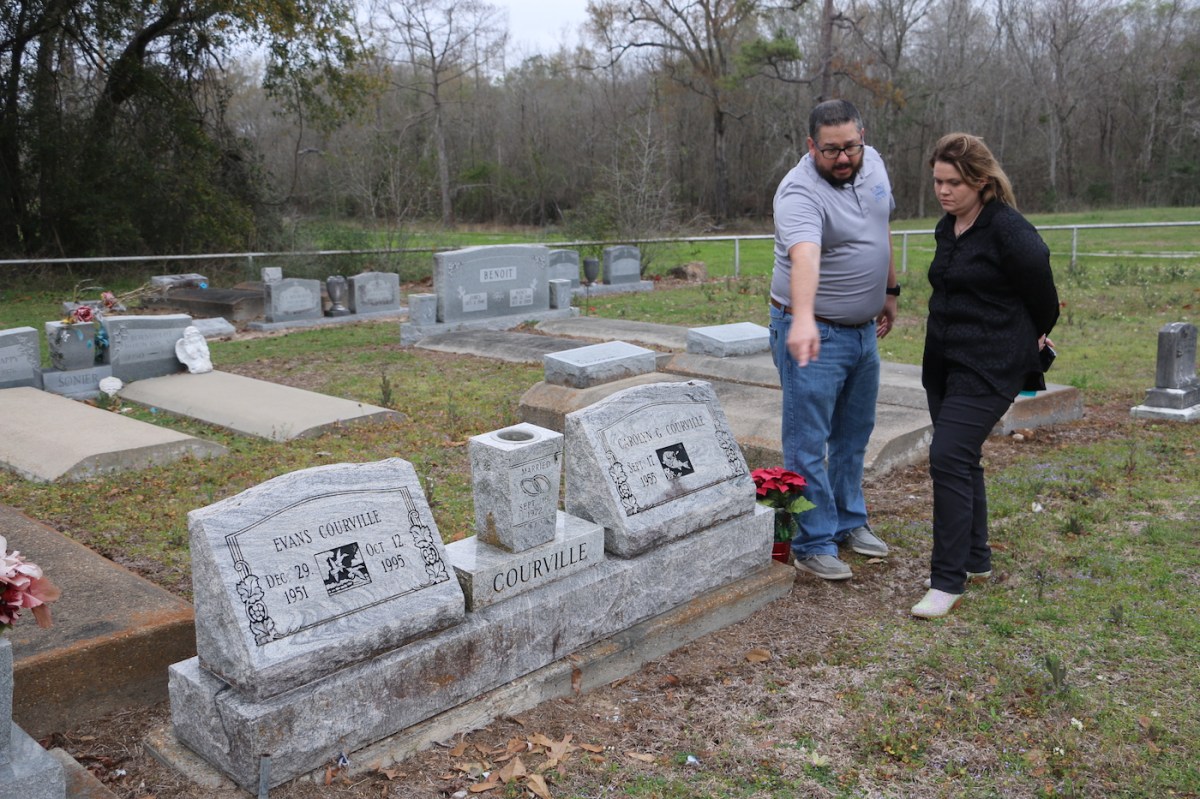
Like Hunter’s company, the task force helps find, recover, and identify lost caskets. Reburial can cost thousands of dollars, but family members of the deceased can receive funding for it through the Federal Emergency Management Agency (FEMA)’s individual assistance program. Because the process of getting that money can be difficult, especially when people are already dealing with fallout from a disaster in other parts of their lives, the task force also helps people apply for it.
And also like Hunter, the task force gets calls from other states where communities find themselves in need of that kind of cemetery restoration expertise—usually along the Atlantic Coast, but sometimes even in the West.
“Oddly, [requests for help have] come from places such as New Mexico, which you wouldn’t think would have flood problems with cemeteries,” says Seidemann, “but apparently as they’ve had wildfire problems and then rainstorms, the undergrowth that is keeping burials in place there is washing off.”
Climate change is exposing how unprepared cemeteries are for extreme weather events says Jennifer Blanks, a PhD candidate at Texas A&M University who studies cemetery preservation and management.
“Climate change is showing that there actually isn’t really a good protocol or procedure to help with those kinds of issues, in terms of mitigating cemeteries from disasters, and how to recover them afterward,” Blanks says.
That is especially true for Black and other minority cemeteries. In her research, Blanks has found that Black cemeteries in Louisiana have more exposure to flood hazards and proximity to hazardous chemical sites.
“Traditionally, Black residents and non-white people are forced to settle on land that is undesirable for different reasons, whether it cannot produce any type of crop or products, or the value of the land is low because it is in a floodplain,” Blanks says.
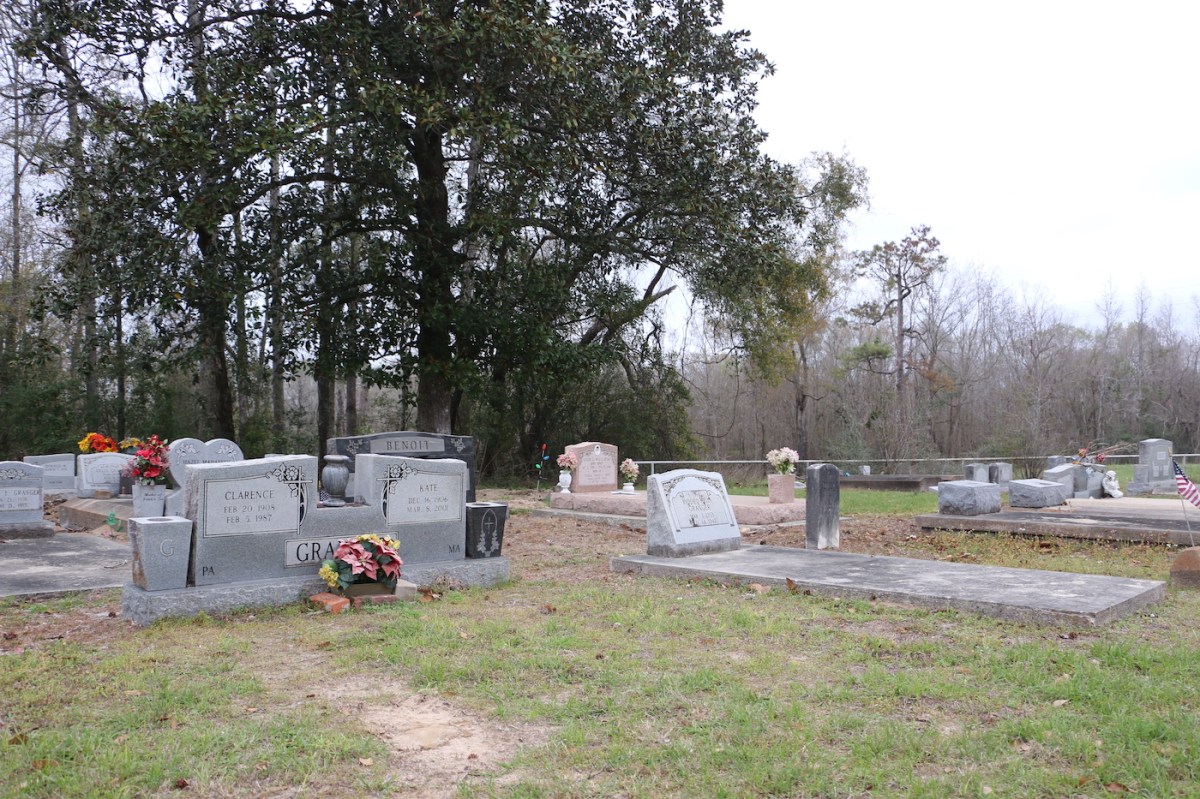
One of the solutions is to bury caskets underground instead of in the surface vaults that are common in Louisiana. Niblett’s Bluff Cemetery now requires that new burials be underground, though there is some debate over whether graves in New Orleans are mostly above ground due to tradition or due to the high water table.
Having good documentation of who is buried where is also extremely important for recovery. If a casket is dislodged and a deceased person cannot be identified, if their next of kin cannot be contacted, or if that person can’t pay, the casket will not get reburied. Hunter says that in those cases his company just tries to get the casket out of public view.
This is exactly what happened in Charlotte Harbor Cemetery in Florida. It could not get FEMA assistance, and Kenner says that finding and contacting relatives of people who had died so long ago would be an impossible task for a cemetery that was established in 1879.
Even in Louisiana—which started to require identification on caskets after Hurricane Katrina—the lack of documentation is still a challenge, Seidemann says.
“Compliance with that has been spotty at best,” he said.
Blanks said those who manage cemeteries should work with the community to gather local knowledge of graves and consider creating maps.
“It’s one thing to protect the physical landscape,” she says, “but it would also be a disservice to not preserve or recover the cultural heritage that is in the landscape itself.”
Eva Tesfaye is a reporter with KCUR, Harvest Public Media, Mississippi River Basin Ag & Water Desk in Kansas City, Missouri.
IRA FLATOW: This is Science Friday. I’m Ira Flatow.
KATHLEEN DAVIS: And I’m Kathleen Davis. And now it’s time to check in on the state of science.
SPEAKER 1: This is KERA News.
SPEAKER 2: For WWNO.
SPEAKER 3: Saint Louis Public Radio.
SPEAKER 4: Iowa Public Radio News.
KATHLEEN DAVIS: Local science stories of national significance. Climate change affects lives across the country, but it’s also impacting the dead. Flooded cemeteries have been a problem in Louisiana for decades, and the problem is just getting worse. As natural disasters get more common with climate change, other states are turning to Louisiana to learn how to prevent cemeteries from washing away.
Joining me now to talk about this is my guest, Eva Tesfaye, Coastal reporter at WWNO in New Orleans, who reported this story in collaboration with Science Friday. Eva, welcome back to Science Friday.
EVA TESFAYE: Thanks for having me.
KATHLEEN DAVIS: So to start, give me a sense of the scale of this issue in Louisiana. I mean, how common is it that a cemetery gets flooded?
EVA TESFAYE: Yeah, so it happens pretty much with every major storm. The company I spoke to that recovers cemeteries, they’ve been working since Katrina. They’ve done it during Rita, Ike, Harvey, Laura, Delta, Ida. It’s also just known to happen when there’s really bad flooding. There doesn’t even have to be a storm. So there were floods in 2016 that we can get into a little bit later.
KATHLEEN DAVIS: OK. So cemeteries are set up differently across the US. How are people buried in Louisiana cemeteries?
EVA TESFAYE: So the unique thing about Louisiana is often the graves are above ground. We have a lot of mausoleums, a lot of what are called “surface vaults,” where most of it is in the ground, and there’s just kind of a slab on top.
And in New Orleans, a tour guide will tell you that has to do with the city’s high water table. It’s not actually super clear if that’s true or not. But it was probably mostly due to the traditions from the state’s historical ties to Spain and France.
KATHLEEN DAVIS: So have there been situations where caskets have literally floated away?
EVA TESFAYE: Yes, that’s exactly what happens. Water pressure from the flooding builds on the surface vault, and that causes those vaults to pop open. And then the caskets will get swept up by the water.
KATHLEEN DAVIS: Ugh. Awful. You spoke with Charlie Hunter, who’s an expert in the field of rebuilding cemeteries after natural disasters. What did you learn from him?
EVA TESFAYE: He owns the company Gulf Coast Forensic Solutions that I talked to. And like I said, I learned just how common this problem is. Here’s a clip from him.
[AUDIO PLAYBACK]
– It is worth every second. You know, being able to give families a little bit of peace at the of the day is a really big thing. So it’s a never-ending job.
[END PLAYBACK]
EVA TESFAYE: I also learned how much work it is. So obviously, first, you have to find the caskets. Then you have to identify them. We often don’t know who those people were or where they were buried. And so that’s often the hardest part, is just figuring out who these people are.
And then you have to contact their families. And then you have to get them reburied in the places that they were originally buried. So Hunter says that it’s a lot of work that he does on the front end before he even gets paid. Because he has to find those caskets and figure out who they are, before he can even approach the families who will be the ones to pay for this.
KATHLEEN DAVIS: And this leads into this question of, it’s one thing to, say, have a municipal building damaged by a hurricane. It’s an entirely different thing to have a cemetery affected because people’s loved ones have been laid to rest there. It’s an emotional place. Did you talk to anybody who’s dealt with their loved one’s remains being affected by a natural disaster?
EVA TESFAYE: Yeah. I spoke to Emily Dalfrey. She’s a high school teacher in Vinton, Louisiana. So that’s in Southwest Louisiana, where this problem is just huge. And she lives across the street from her local cemetery, Niblett’s Bluff.
And during the floods I mentioned in 2016 that were all across the state, they affected 74 cemeteries across the state. Her family members were swept out of the cemetery and actually washed into her yard, with a bunch of other people.
KATHLEEN DAVIS: Wow.
EVA TESFAYE: To give you a picture of how bad that flooding was, she says the water was so high that they were driving literal boats over the cemetery. It was higher than some of the trees that were in there.
KATHLEEN DAVIS: Wow. So does the emotional aspect of trying to recoup a cemetery affect how experts like Charlie Hunter go about their work?
EVA TESFAYE: Yeah. What I heard a lot when talking to these experts is that they recognize that, often, these people are trying to rebuild their lives because, obviously, the flooding didn’t only affect cemeteries. So it’s the last thing on their minds. So they’re really aware of that. And they try to take as much of this burden off of people as much as they possibly can.
Like I said, they do a lot of that work on the front end. They just try to offer their expertise to make it easier for those people.
So Dalfrey mentioned that her house was destroyed. And she got help from a Gulf Coast Forensic Solutions. The whole cemetery did. And this is what she said about it.
[AUDIO PLAYBACK]
– We truly would have not gotten it done if we would not have had that guidance and that help. Because, I mean, when you bury your family, you think they’re there forever.
[END PLAYBACK]
EVA TESFAYE: It’s common enough in Louisiana that people are starting to know that they should check cemeteries whenever there’s a major storm event. But a lot of people are just not thinking about that. Because, like she said, you don’t really expect this to happen.
KATHLEEN DAVIS: Right. Are some cemeteries more vulnerable than others?
EVA TESFAYE: Yes. I spoke to a researcher named Jennifer Blanks. She studies cemetery preservation and management at Texas A&M University. And she actually published a study where she found that Black cemeteries are more likely to be in the way of danger in Louisiana.
And there are multiple hazards that are affecting these cemeteries. So it’s not only just flooding, but it’s also from their proximity to chemical plants. And these cemeteries are there partly because, after enslaved people were freed, a lot of them stayed settled near the plantations. Or a lot of the cemeteries ended up there because the land was cheaper. It was just undesirable.
So we just see a lot of those environmental justice issues playing out also with cemeteries, where these cemeteries end up in places that are flood prone.
KATHLEEN DAVIS: Louisiana actually now has a state task force to address cemetery recovery. What does this task force do?
EVA TESFAYE: Yeah, so it’s called the Louisiana Cemetery Response Task Force. And kind of like Hunter, they help find, recover, identify lost caskets. And they work with contractors like Hunter to make sure the reburial process goes smoothly.
One of the main things they also do is help people get access to FEMA money. There is money available through the individual assistance program, so that means that families would have to apply for this money to get their loved ones reburied. Like, a cemetery can’t get that money.
And so that process can also be confusing and complicated. Like I said, people are dealing with other things. Ryan Seidemann, who I spoke to, who’s the chairman of this task force, says that was part of the reasons that they started it in 2016. And it was started after all that flooding that affected Dalfrey and her family.
It was created to help with this lack of federal assistance, and also because there’s not a lot of people left in these places that are managing the cemeteries. Here’s what he said.
[AUDIO PLAYBACK]
– A lot of folks have moved away over the years. There really weren’t a lot of people to speak for those decedents who had taken off and floated away with the storm surge.
[END PLAYBACK]
EVA TESFAYE: The task force automatically gets activated when two things happen– when there’s a disaster declaration from the state and when there are reports of cemetery damage. And it’s actually been activated since Hurricane Ida in 2021. So you can see that there’s clearly a need for this.
KATHLEEN DAVIS: OK. So other states are dealing with more natural disasters than they have before, and not just hurricanes. Are other states now turning to Louisiana for help for how to protect their cemeteries?
EVA TESFAYE: Yeah. So both Hunter and Seidemann, so both Gulf Coast Forensic Solutions and the cemetery task force told me they get calls from other states. And obviously, you see that mostly along the Gulf Coast and the Atlantic, where there are lots of storms and flooding. But there’s even places like Tennessee, California, New Mexico.
Seidemann told me he is the one who got the calls from New Mexico. And he said that was because wildfires destroyed this underbrush that was under the graves. And then the rainstorms then washed those caskets away.
I also talked to a woman in Port Charlotte, Florida, who got help from Gulf Coast Forensic Solutions. Her name is Eva Kenner. She was affected by Hurricane Ian in 2022. And it knocked over a bunch of trees, and it damaged close to 100 gravestones. They, thankfully, did not have any caskets come loose. But she said that kind of damage was unprecedented. Here’s what she said.
[AUDIO PLAYBACK]
– I’ve been there 20 years working at the cemetery. And we’ve never had damaged headstones from a storm before. That was the first time.
[END PLAYBACK]
KATHLEEN DAVIS: So what strategies are there for making cemeteries more resilient in the future? I mean, extreme weather is not going anywhere.
EVA TESFAYE: Yeah. Everyone I talked to said the main thing that would really, really help is having thorough documentation for all these cemeteries about who’s buried where, contact information for those people’s next of kin.
People are starting to make way on this. Louisiana does have a law that was put in place after Hurricane Katrina requiring some sort of identification on caskets. But Seidemann says that’s not really enforced very well. Jennifer Blanks, the researcher, suggested that whoever’s managing a cemetery should just start creating maps, even just drawing them yourself.
Another solution– the experts I spoke to said that we really should be burying these caskets deep underground. And that’s exactly what Dalfrey did when she reburied her family. In fact, the cemetery, Niblett’s Bluff, actually started requiring that any new interments would be underground. And Dalfrey says that none of the graves that have that have come unburied since.
KATHLEEN DAVIS: Eva Tesfaye, reporter for the Coastal Desk at WWNO, reported this story in collaboration with Science Friday. Eva, thank you so much for this.
EVA TESFAYE: Thank you.
KATHLEEN DAVIS: And if you want to read the full story, head to our website, sciencefriday.com/cemeteries.
Copyright © 2024 Science Friday Initiative. All rights reserved. Science Friday transcripts are produced on a tight deadline by 3Play Media. Fidelity to the original aired/published audio or video file might vary, and text might be updated or amended in the future. For the authoritative record of Science Friday’s programming, please visit the original aired/published recording. For terms of use and more information, visit our policies pages at http://www.sciencefriday.com/about/policies/
Kathleen Davis is a producer and fill-in host at Science Friday, which means she spends her weeks researching, writing, editing, and sometimes talking into a microphone. She’s always eager to talk about freshwater lakes and Coney Island diners.